Agile Software Development with Scrum- A Complete Guide to The Steps in Agile Scrum Methodology
Agile scrum methodology is not only a model but a wonderful exercise in itself. It takes care of so many parameters that are involved in the development of software. Giving eye to detail is one of the most fascinating features of this framework. The steps in an agile scrum methodology involve envisioning, planning, developing, testing, and bug fixing for software. With scrum architecture, you can ensure continuous development, improvement, and delivery of a software product.
In this blog, we will learn from scratch about the different steps in agile scrum methodology.
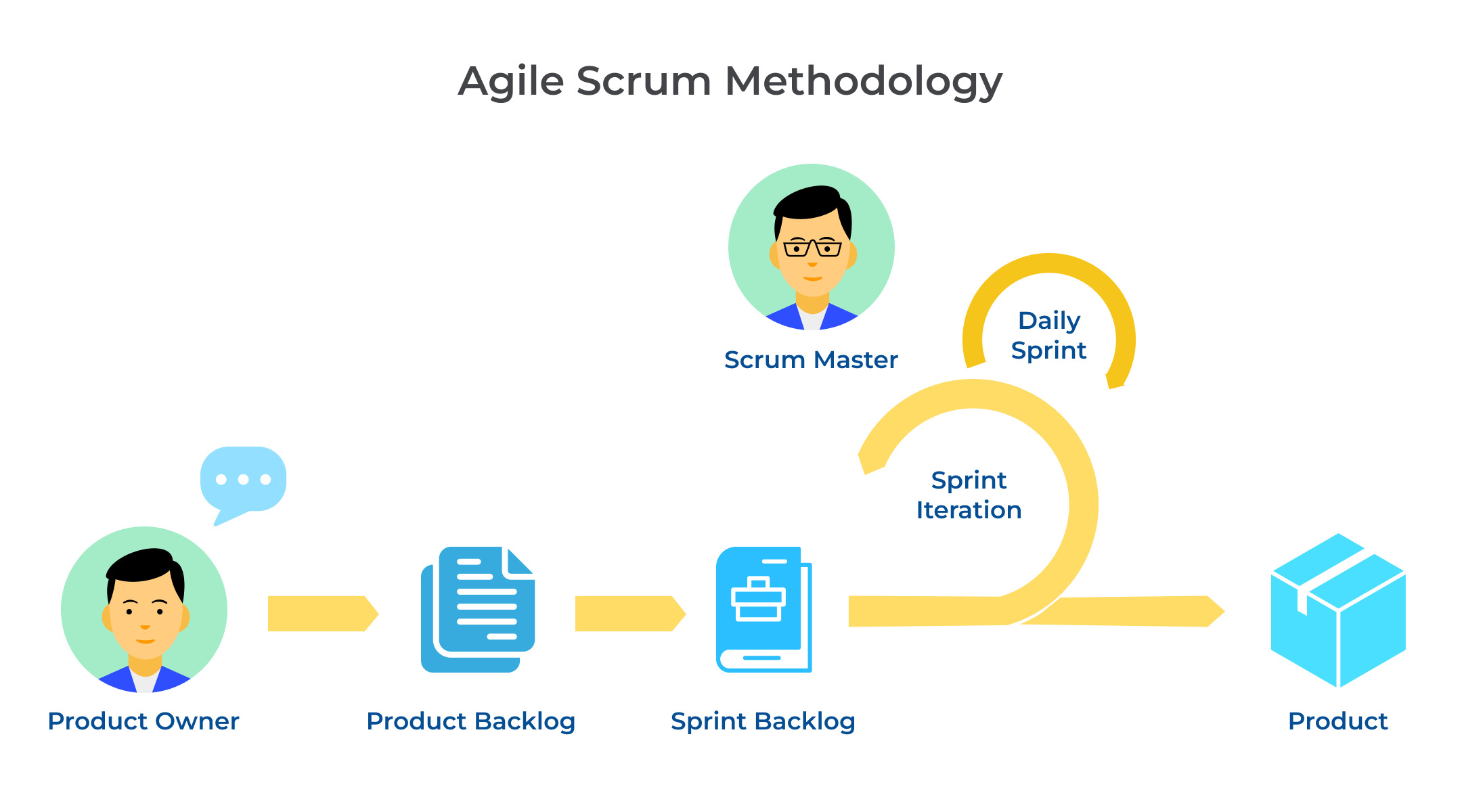
Agile Scrum Methodology: Overview
Scrum is an agile framework that gives a structured approach to fast-paced agile teams and organizations. Its main agenda is prioritizing, managing, and executing work. This framework allows teams to coordinate with the stakeholders, value customers’ needs, and strive towards solving development issues. To understand at a high level, scrum involves the following:
- Product Backlog: This includes all the features as well as functionalities that are necessary for the software. The features in the product backlog are groomed by the product owner. They evaluate the priority of all the features based on a few things:
- Impact of the feature on the overall agile software development
- Risks involved in that feature, and
- the cost involved
- Sprint Planning: Once the product backlog is sorted, then comes sprint planning. Here the team involved analyzes the objective of each feature and plans the ways to achieve them. As per the importance of the feature, the product backlogs are added to different sprints.
- Sprint: This is the actual working phase in terms of development. A typical sprint could be from one week to 4 weeks. During this duration, the team works towards achieving the goals that were set in the sprint planning. It comprises daily standup meetings where team members brief the scrum master about the tasks that are completed and those that they have planned for the day.
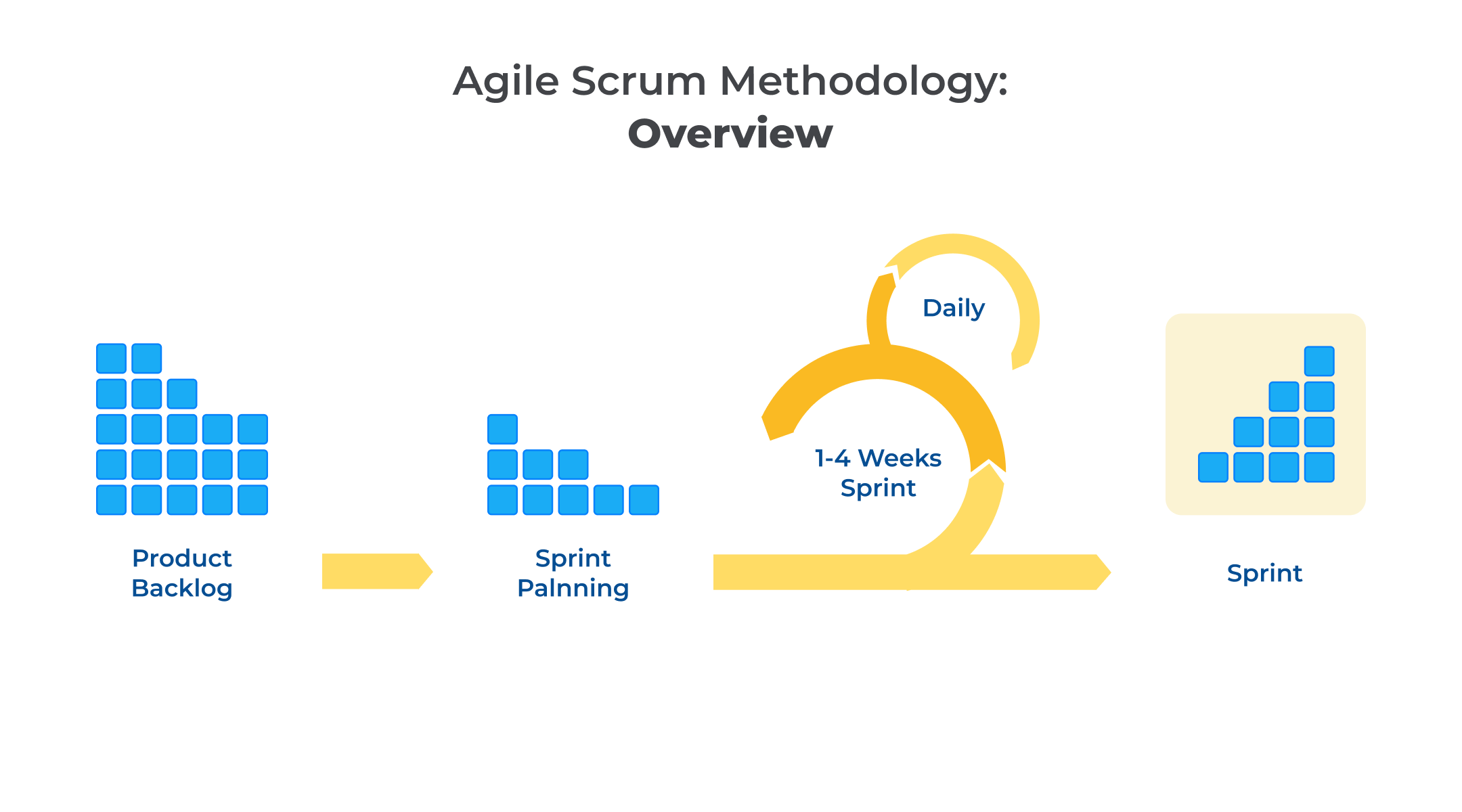
Now, before discussing the steps involved in scrum methodology, let’s talk about the scrum roles and principles.
Roles Involved in Agile Scrum Methodology
There are three roles in the agile software development methodology that defines the complete team. They are:
- Product Owner: A product owner is responsible for not just taking care of the day-to-day developments but is also accountable for constantly bringing in inputs from the stakeholders and end users. They prioritize the product backlogs and ensure the deliverables are executed on time.
- Scrum Master: The roles and responsibilities of a scrum master are to guide and support the teams across the department/organization to adhere to the principles of scrum methodology. They also guide the team to be self-sufficient, encourage them to handle important issues in the best possible ways, and so much more.
- Development Team: A development team is a cross-functional team that comprises developers, designers, QA testers, and so on. They have the technical skills that contribute towards developing the final product.
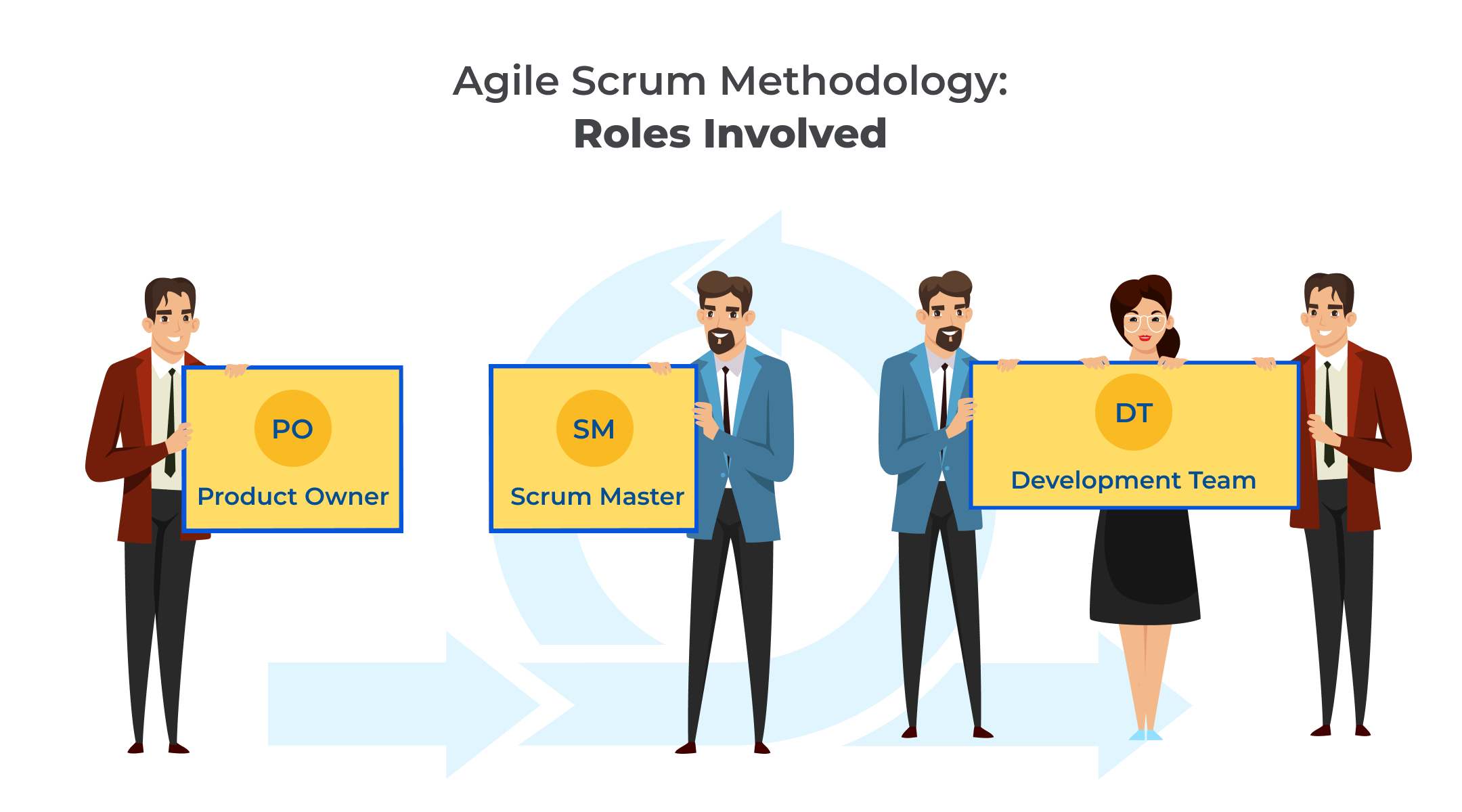
Principles of Agile Scrum Methodology
The principles of agile scrum methodology are nothing but guidelines that should be abided by to follow the scrum methodology. It’s the scrum master who makes sure that scrum principles are properly followed and kept in consideration throughout the process. Let’s have a glimpse of these principles here:
- Transparency: To stay on the same page, it is important to have transparency regarding the work being done by each of the team members. This helps in adapting to the new changes and also in their easy inspection.
- Minimize Dependencies: The scrum teams are responsible for carrying out their tasks without the interference of an outside manager. This helps them in working independently and be accountable for their tasks.
- Time Limit: This is a way of saving time and making sure that not too much time is spent on a given task. Once you set a time limit for a job, the team makes sure to finish it up in the optimal time frame.
- Constant evaluation of Value: As the project progresses every team has to constantly weigh the value of the product backlog according to its importance for the end users. This helps in staying focused on priorities.
- Regular Iterations: Sprints promote iterative development of a product as you can constantly review the quality of the product and update it as and when required without waiting till the end.
- Team Collaboration: Daily stand-ups, team planning, and various other discussions help in making a collaborative team whose goal is to deliver a quality product to the stakeholders.
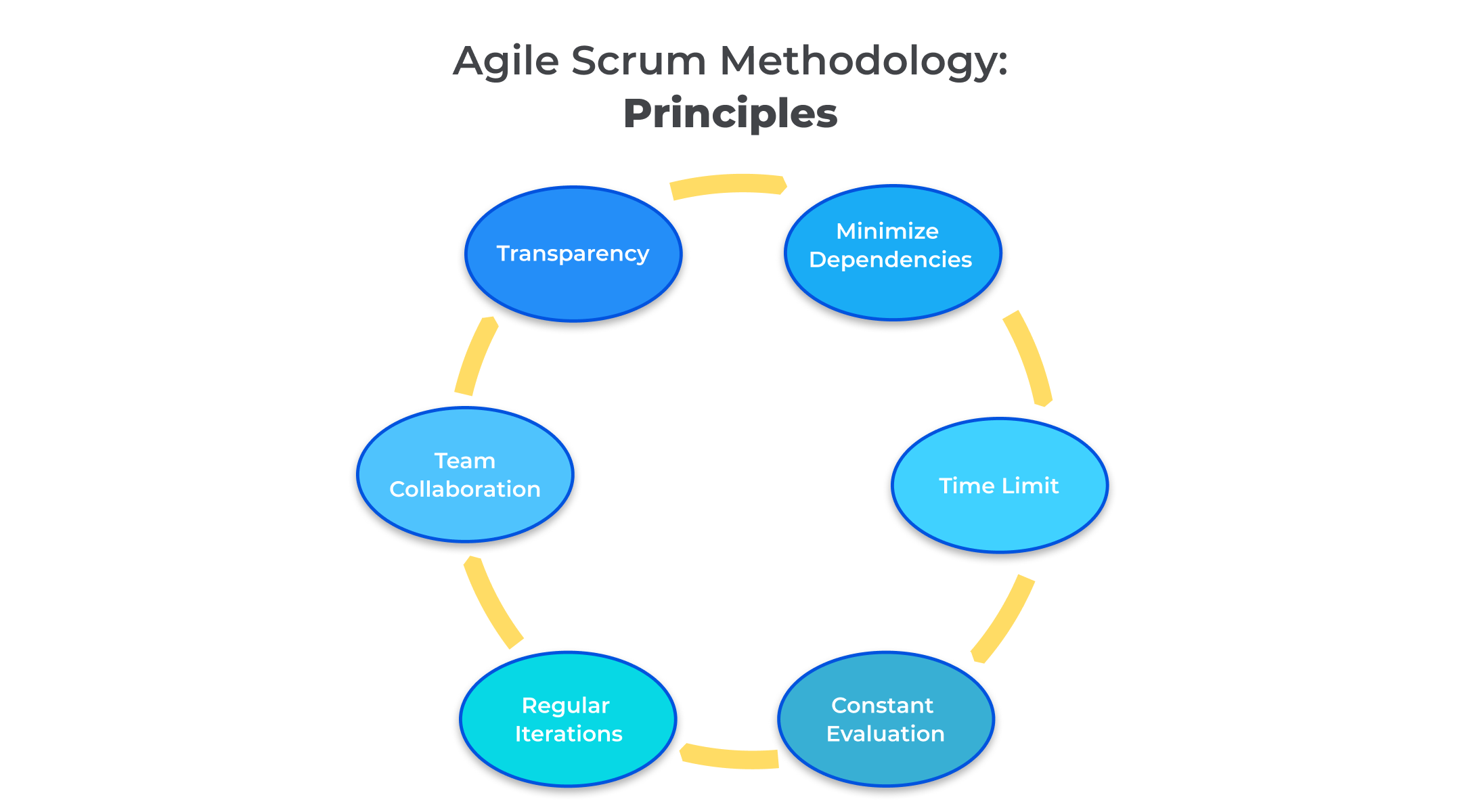
Step-by-Step Guide to Agile Scrum Methodology
Now that we have understood the basics of it, following the steps in agile scrum methodology will become easier:
- High-level Sprint Planning: The very first step is to have complete sprint planning. This step is mainly focused on the clients as here all the features are discussed in detail. The breakdown of features helps the team in estimating and giving a proper timeline and date of delivery to the stakeholders and end users in advance. Here the product owner analyses all the features and divides them into epics based on their complexities. These epics are further divided into user stories and added to the product backlog.
- Detailed Sprint Planning: In this step, the actual work process begins. The team gathers to review all the features where developers, designers, and QA testers assign story points to the user stories that are included in the given sprint. These user stories are picked up from the product backlog. Depending upon various factors the story points vary from minimum to maximum. These factors depend on the weighing of all the scenarios whether positive or negative. Some of the factors are:
- Efforts in front-end development
- Validating and Integrating APIs
- Efforts in back-end development
- Wireframes involved in the design
- QA efforts involved writing different test cases
- Sub-tasks (if any) for a user story
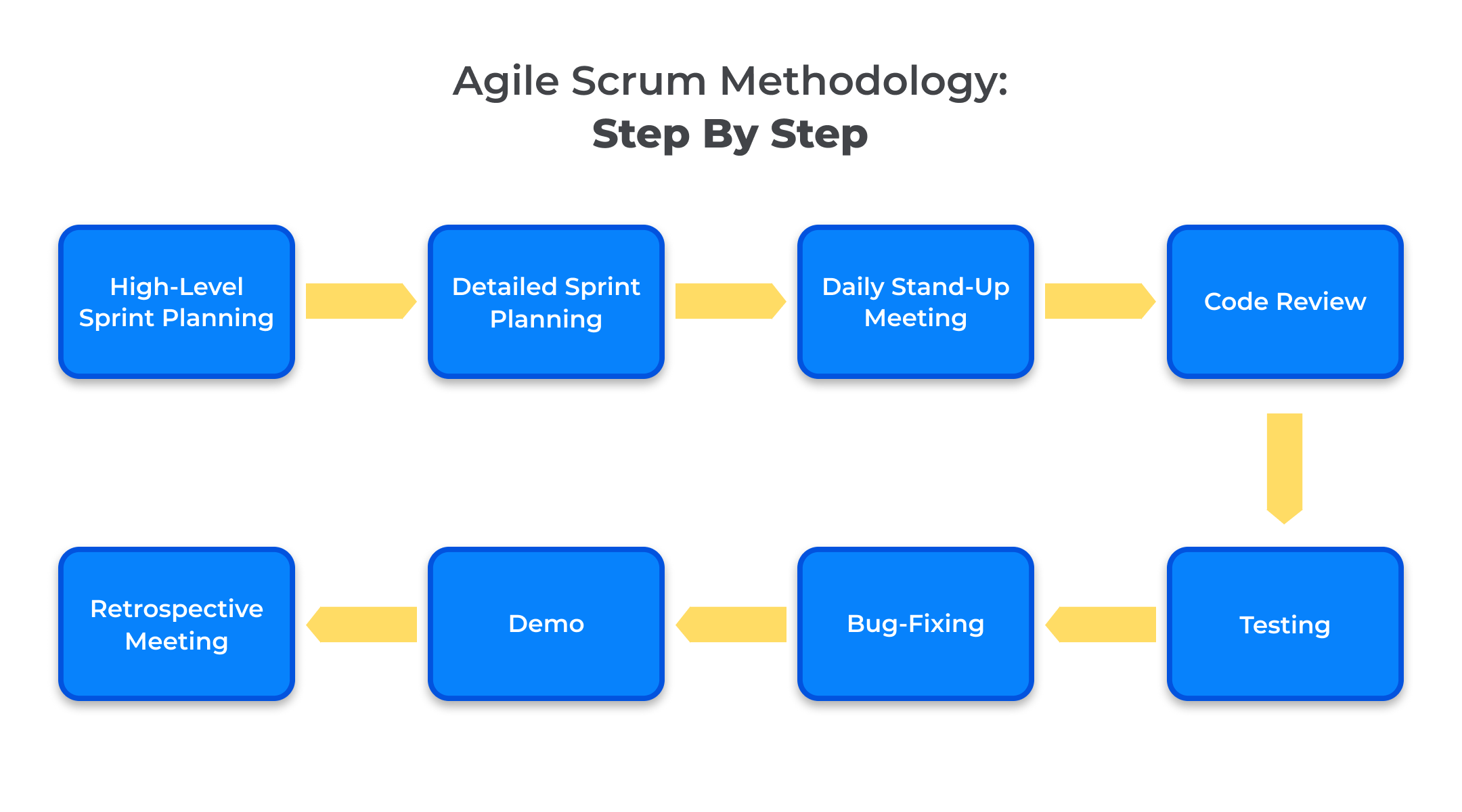
- Daily Stand-up Meeting: One of the most important events in a scrum, daily stand-up meetings are a great way of tracking everyone’s progress. Not only this, you can even find the difference between the estimated time and actual time taken to finish a task. This helps in staying up to date with upcoming tasks. Daily stand-ups are also helpful for the team as discussing each other's progress gives them motivation in completing their respective user stories in time.
- Code Review: This step is especially for the developers who are assigned as reviewers for the coding done by their teammates. The motive behind code review is not just to ensure the correctness of the code but to also help in optimizing it in the best possible way.
- Testing: This is again a very important step also called as CI/CD process i.e., Continuous Integration/Continuous Deployment process. These are helpful to build, test, and deploying an application. This is an automated process that saves a lot of time for developers.
- Bug-fixing: Once the testing is done, it's time to fix the bugs found. This is iterative testing that helps in fixing issues beforehand so that the product that is delivered to the stakeholders is free of errors and is the best in quality.
- Demo: After the product is ready, tested, and all the bugs are fixed, it's time for demos. First, there are internal demos, where the whole team is present and gives suggestions for improvements and points out any bugs. Once these suggestions are incorporated and bugs are fixed, the product gets ready for client demo. Here again, the suggestions given by the clients are taken into consideration. A time-consuming suggestion, if not very important for the current product, is noted down and added to the future scope.
- Retrospective Meeting: After the product is completed and delivered, a retrospective meeting is held where each team member is encouraged to point out the positives and negatives involved in the complete process of product development, testing and delivery. This helps the team in improving their performance and analyzing their weak points. Also, this helps in carrying out future software product development exercises in the most efficient manner.
As Woody Zuill has rightly said, “If you adopt only one agile practice, let it be retrospectives. Everything else will follow.”
Conclusion
After learning about agile scrum methodology, we can conclude that anything planned well has a higher chance of getting executed properly as well. This stepwise discussion on agile scrum methodology, if followed properly, results in the development of outstanding products. It is time-saving, cost-effective and mainly it is the top choice of the world’s leading organizations.



